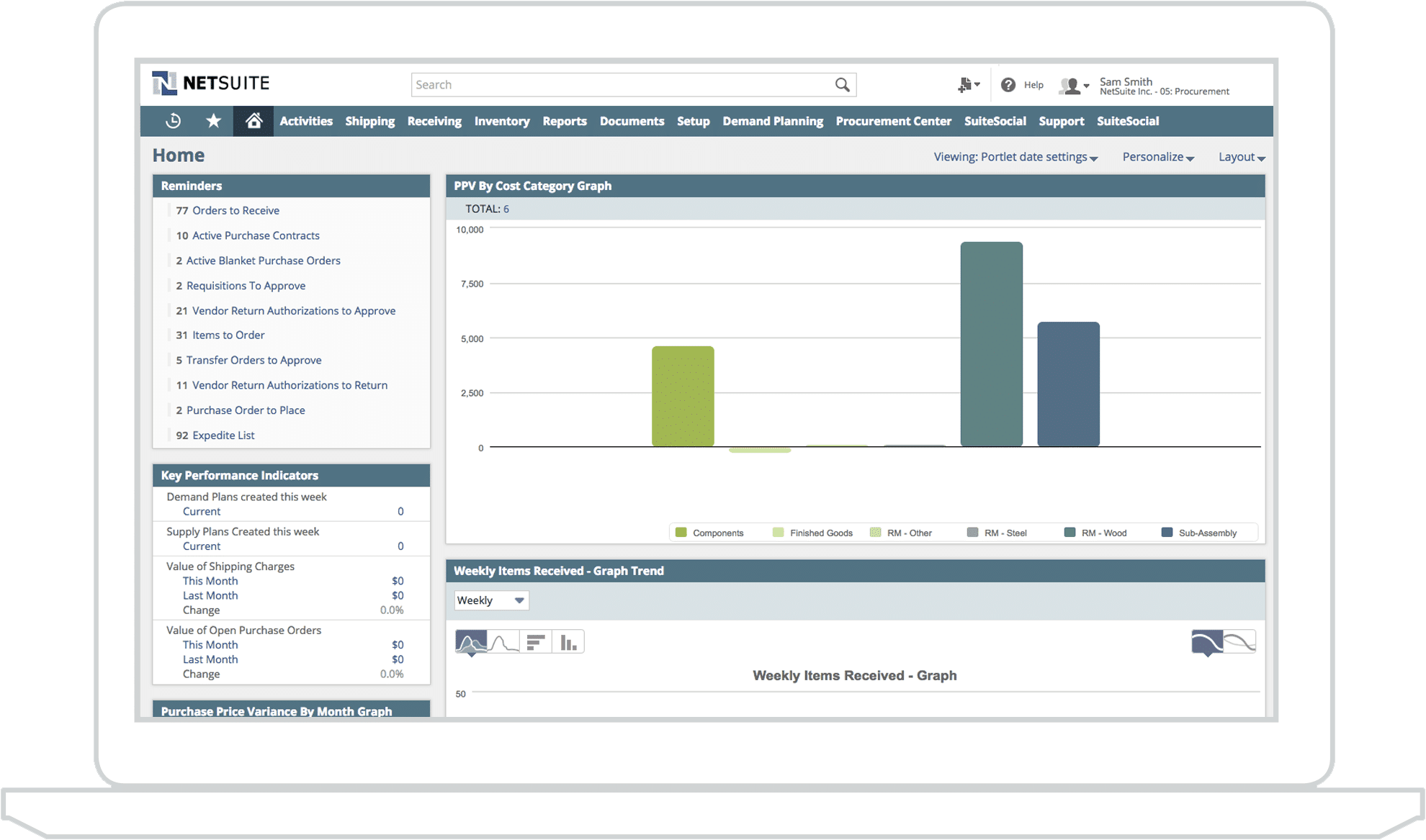Supply chain management
The production, distribution and supply chain management functionalities in NetSuite all proceed from the principle that the physical location of a product’s manufacture or storage is irrelevant for the choices you make. The entire chain can be managed from a single programme.

Manage and optimise your worldwide Supply Chain
NetSuite offers the following functionalities
Planning
Execution
Multi-site, currency and language
Collaboration
Watch the video
What are the advantages of NetSuite for a supply chain manager?
The advantages of
supply chain management in NetSuite
Real-time insight into your supply chain
You are always abreast of the status of your supply chain, thanks to the automatically-generated status updates.
Raise service levels
By using order management rules, you can optimise delivery plans and cut throughput time.
Reduce the cost of your supply chain
Discover potential bottlenecks on time and adapt your processes or strategy accordingly.
Choose FoodQloud
Because only a 100% solution is good enough
Automatic upgrades from the cloud:
never again have to deal with costly re-implementation
Customisation and interfaces are easy to achieve:
and are an automatic component of the upgrade process
Work seamlessly across borders:
Consolidate and control from a single application and database
Total solution:
ERP, CRM, HRM and even E-Commerce & POS
OPEX instead of CAPEX:
No prior substantial investment in permits
